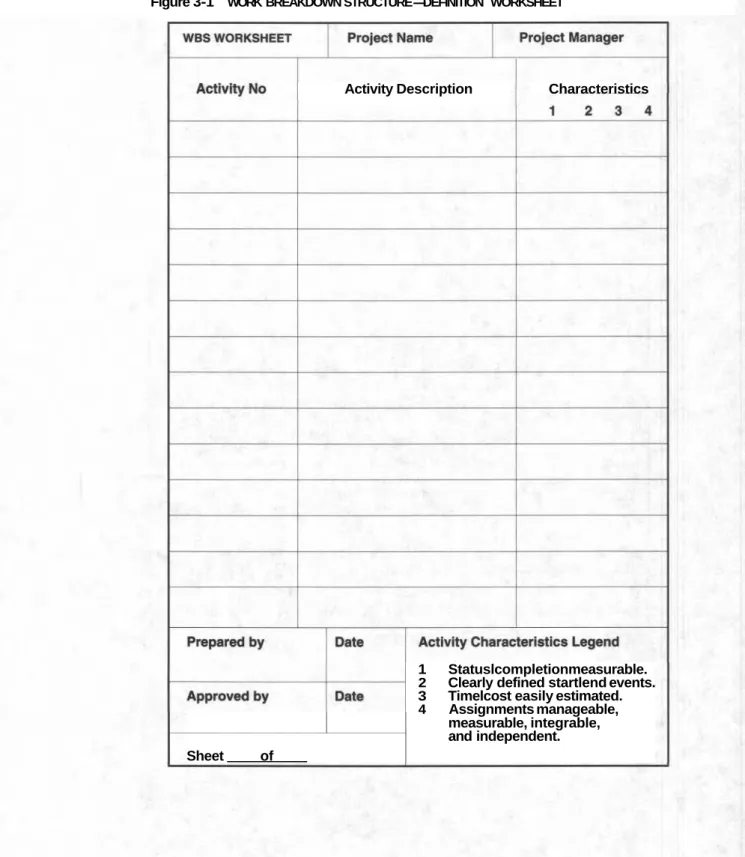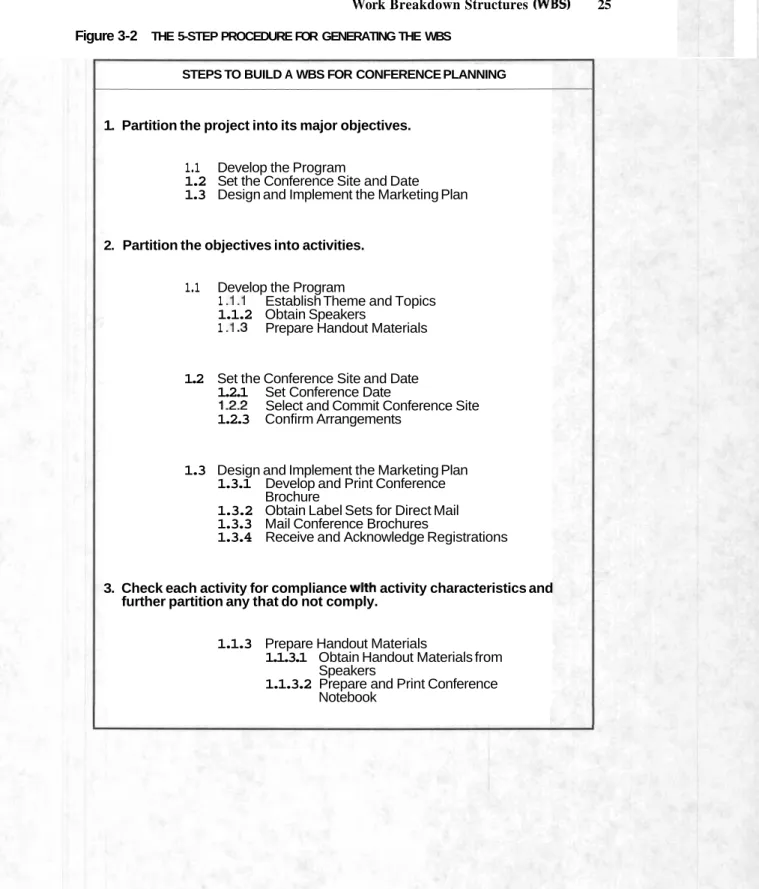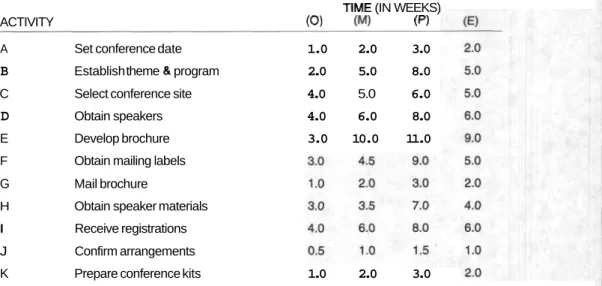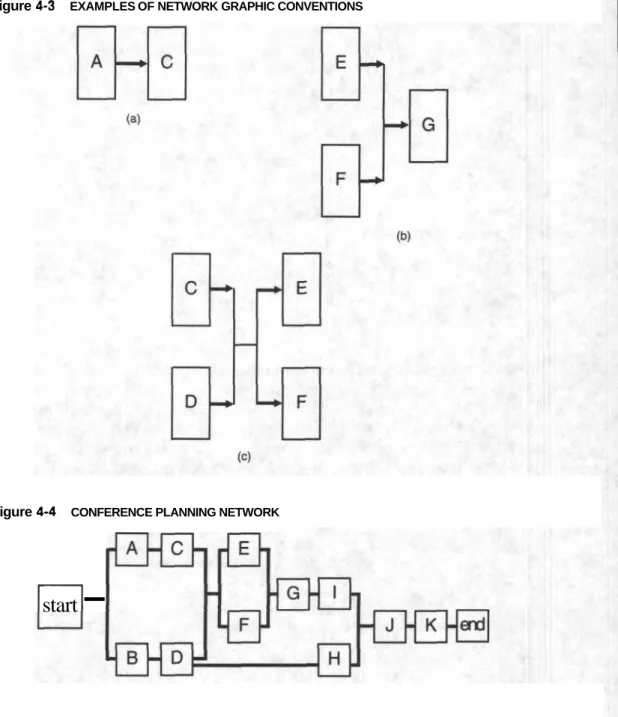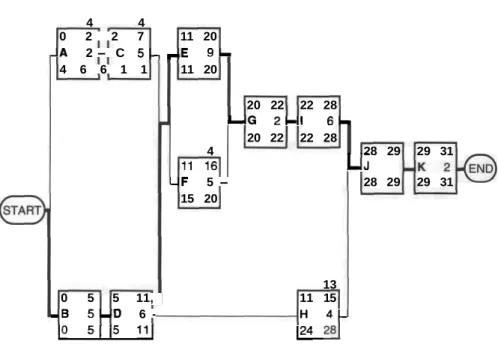Quality Control Checklist for Project Manager Selection 59 Quality Control Checklist for Project Team Selection 60 Acid Test for Project Manager and Team Selection 61 Chapter 7 ASSIGNMENT OF WORK PACKAGES 63. Using Work Package Assignments for Staff Development 68 Work Quality Control Checklist of the project package 68 The acid test of the project work package 69 .
WHO NEEDS PROJECT MANAGEMENT METHODS?
WHAT TECHNIQUES DOES THIS BOOK OFFER?
Our goal is to empower you with a practical understanding of basic project management techniques; and to enable you to use this book as an information and training guide, to distribute to others who will work on the project, and to revise and add to the checklists and documentation here to solve your particular problems. Select and explain key concepts and techniques that can be used manually (and with software).
WHY WE WROTE 5-PHASE PROJECT MANAGEMENT
Empower and encourage you to plan and start a project after reading this book; or, if you are working on a project, to increase your effectiveness on that project.
THE USE OF 5-PHASE PROJECT MANAGEMENT
PLANNING THE PROJECT
INTRODUCTION
WHAT IS PROJECT MANAGEMENT?
5 Therefore, project management is seen as a method and set of techniques based on accepted management principles used to plan, evaluate and control work activities to achieve a desired end result on time, within budget and according to specifications . The phased method that will serve as a guide for our project management development is shown in Figure 1-1.
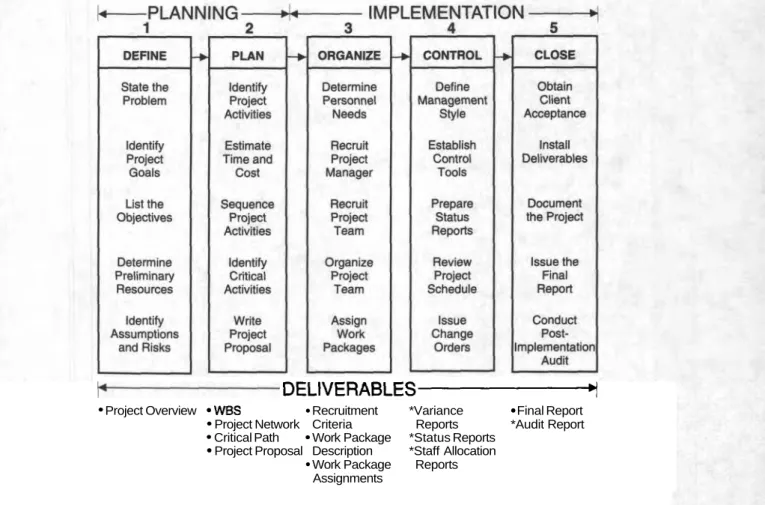
ADOPTING A PROJECT MANAGEMENT MIND-SET
It is therefore important to initially develop a mindset that takes planning seriously. It is the first step in the process of deciding whether to continue or not.
5-PHASE PROJECT MANAGEMENT
Chapter 2
DEFINING THE PROJECT
THE PROJECT OVERVIEW
1 STATE THE PROBLEM
This is followed by writing the purpose of the project by naming the problem, the need and/or the opportunity. In some cases, you should aim to complete the project within the (sometimes arbitrary) deadline.
IDENTIFY PROJECT GOALS
In this case, the project manager and project team determined the project completion date through their initial project management evaluation process. 34;Guessing the completion date often appears as an initial step to move planning forward.
LIST THE OBJECTIVES
It goes without saying that you are expected to complete the project on time, within budget and to specification. At this early stage of project preparation, a planning committee or task force can touch base with those individuals and groups who will be involved in the project to assemble a preliminary list of success criteria against which project outcomes can be measured.
DETERMINE PRELIMINARY RESOURCES
The new order entry system will be considered successful if the average time from order entry to order fulfillment is less than five business days; the average order value exceeds $1,000; less than 2 percent of orders were backordered; and there was less than one customer complaint per $100,000 ordered.
IDENTIFY ASSUMPTIONS AND RISKS
At the winter meeting of the Program of Project Managers (PPM) Governing Council, it was decided that the organization's annual conference would take place in the early fall. Offer three concurrent tracks in the professional program, highlighting nationally known project management experts that will attract members and non-members alike to the PPM Annual Conference.
SUMMARY
All risks, assumptions and questions regarding the project are realistic and demonstrate knowledge of the activities to be completed. The mentioned risks, assumptions and questions enable evaluators of the project to evaluate benefits and costs in the planning, implementation and management of the project.
Chapter 3
SPECIFYING THE PROJECT
IDENTIFY PROJECT ACTIVITIES
WORK BREAKDOWN STRUCTURES (WBS)
Partition the project into its major objectives
Partition the objectives into activities
Check each activity for compliance with activity characteristics and further partition any that do not comply
One of its main uses is to provide a global yet detailed view of the project. As planning continues, the WBS will be used to generate a network representation (discussed in Chapter Four) of the project.
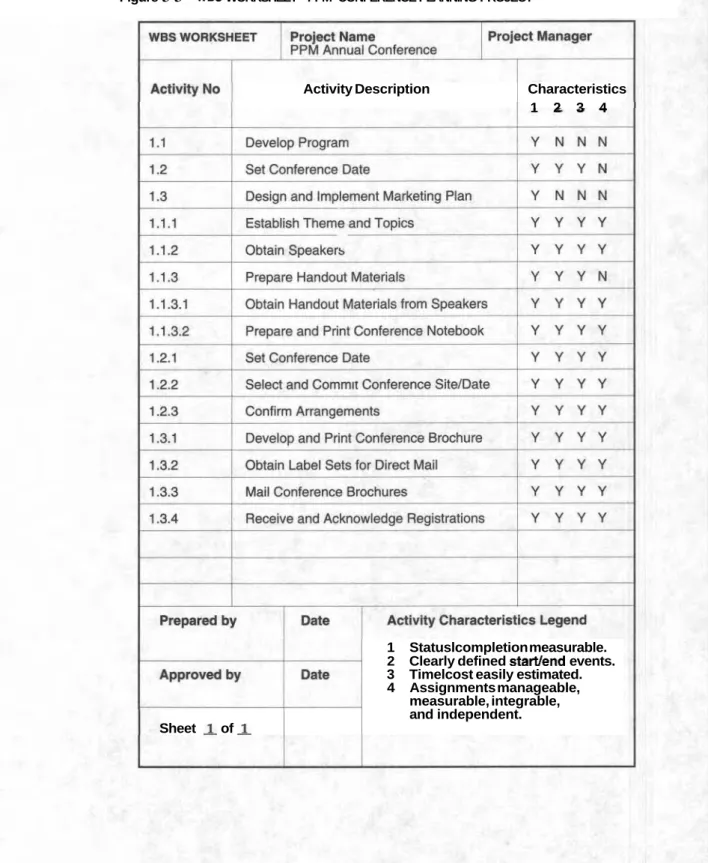
ESTIMATE TIME AND COST
Chapter 4
SEQUENCING THE PROJECT ACTIVITIES
SEQUENCE PROJECT ACTIVITIES
Once this exercise is completed for all activities, the information needed to build the network will be collected. We will add other information to this figure as we continue the process of building the network and analyzing the project activities. Using these simple rules, the network view of the Conference Planning project can be drawn.
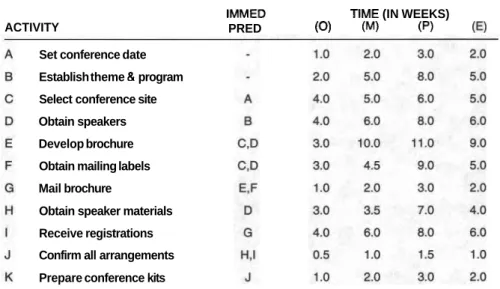
IDENTIFY CRITICAL ACTIVITIES
As long as the activities on the critical path are progressing well, the project will remain on schedule. These calculated values will be used to determine the project completion time and the critical path. In these cases, the project manager will first try to reallocate resources from non-critical path activities.
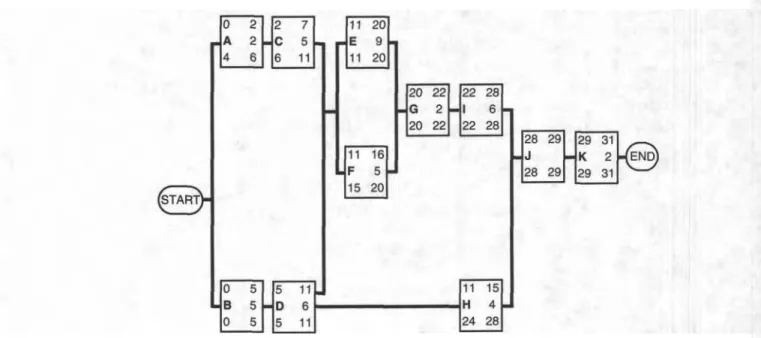
PLAN
Chapter 5
WRITING THE PROJECT PROPOSAL
PURPOSE
This is typically how the project team and other interested parties will refer to the activity. Based on the analysis of the project network, the estimated start and end dates of each activity are given. These are the dates when the project manager is ready to start and expects to complete each activity in the project.
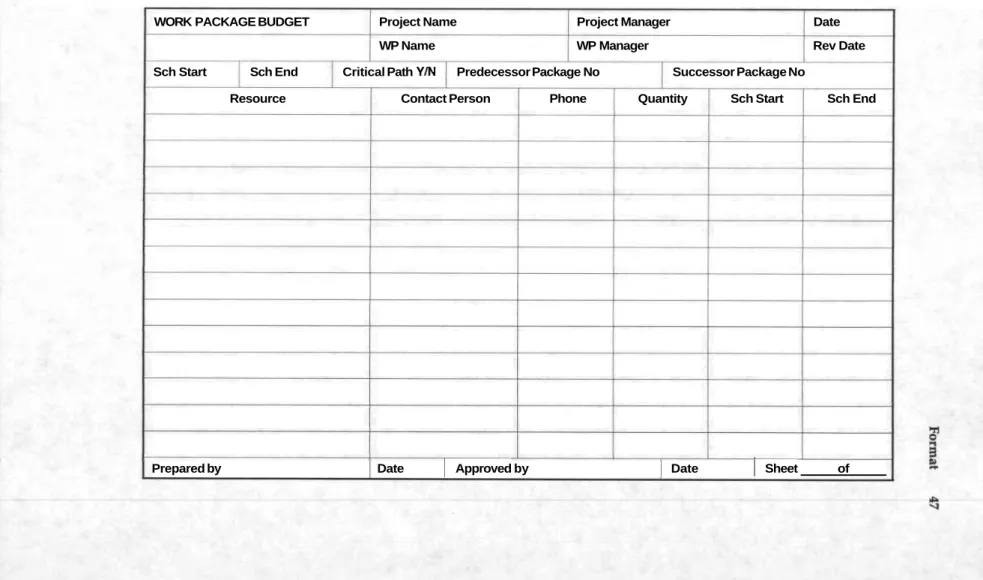
Part I1
IMPLEMENTING THE PROJECT
EMENTAT
Chapter 6
ORGANIZING THE PROJECT TEAM
DETERMINING PERSONNEL NEEDS: SELECTING THE PROJECT MANAGER
The background and expertise of the prospective project manager must be consistent with the nature and needs of the project requirements. A project manager is a leader who helps design, coordinate, control, and implement the project plan. The project manager must be able to separate strategic thinking, planning and decisions from the tactical or operational aspects of the project.
DETERMINING PERSONNEL NEEDS: SELECTING THE PROJECT TEAM
Determining staffing needs: Selecting the project team 57 late project needs, communicating with all levels of management, linking the project's purpose to an enterprise mission, and rewarding and disciplining employees. Ability to work without and across formal structures and authority systems Have knowledge and experience with project management tools.
ORGANIZING AND HOUSING THE PROJECT
Remember, the goal is to get the project's goals met on time, within budget, and according to specifications. Organizing and housing the project are means to this end, not an end in themselves. General corporate management issues policies, procedures or directives for the selection/hiring of the project manager and project team members.
I DEFINE
Chapter 7
ASSIGNING WORK PACKAGES
SCHEDULING WORK PACKAGES
Activity F is not on the critical path and so its start date may be delayed. Unfortunately, Activity F does not have enough time to delay its start long enough for Carl to complete Activity E and then work on Activity F without further delaying the project. The project manager will want to consider these scheduling alternatives for non-critical path activities in order to balance resource demands throughout the project.
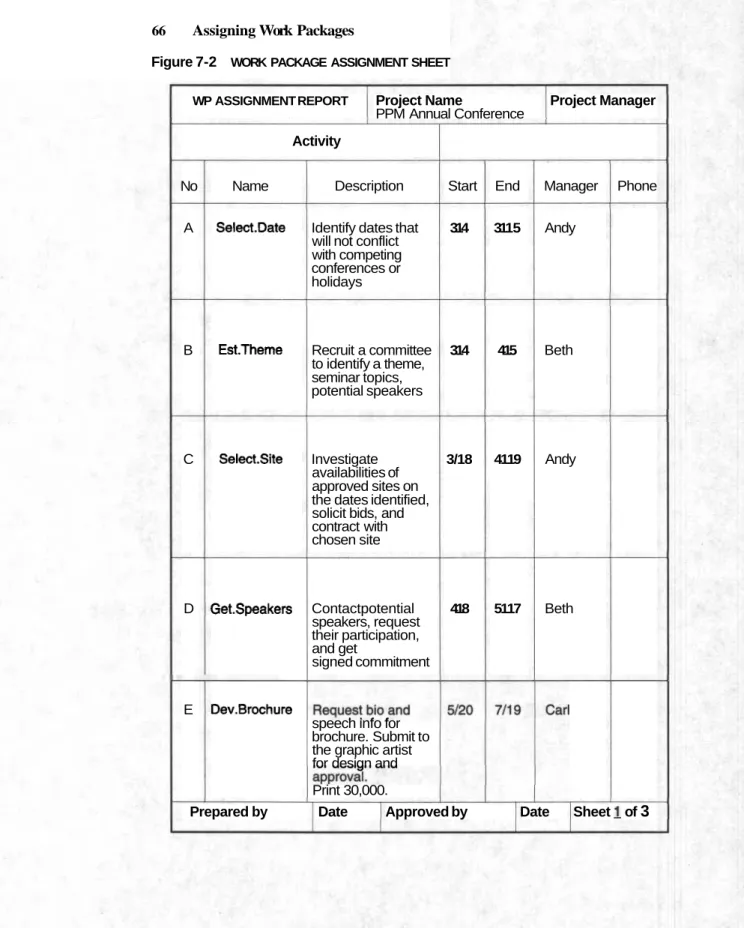
USING WORK PACKAGE ASSIGNMENTS FOR STAFF DEVELOPMENT
Chapter 8
MANAGING PEOPLE AND PROJECT RELATIONSHIPS
SEVEN HABITS OF HIGHLY EFFECTIVE PEOPLE
12 GUIDELINES FOR EFFECTIVE PROJECT LEADERSHIP
It is important as a project manager and team member to understand that newly formed groups and teams go through a cycle or stages of development. Communication skills, team cohesiveness, conflict resolution skills and effective meeting organization can improve your transition to the performance stage. Before introducing communication skills, it is helpful to recognize the barriers that prevent active listening and responding.
MANAGING COMMUNICATION IN TEAM RELATIONSHIPS
The more cohesive the group, the more eager individuals will be for membership, and thus the more likely they will be to confirm the group's norms. Another way of saying this is: The more cohesive the group, the more influence it has on its members. The easier and more often member differences are resolved in a way that is satisfactory to all members, the greater will be group cohesion (Deutsch, 1968).
MANAGING EFFECTIVE MEETINGS
Conclude by stating the most important decisions taken, key outcomes and details on follow-up (who, when, where and how). This chapter has provided you with project relationship management checklists and tips to effectively control project activities. For example, project managers must empower their teams and other organizational members to bring out the excitement and skills of those working to achieve the project's goal.
Chapter 9
MAINTAINING THE PROJECT SCHEDULE
ESTABLISH CONTROL TOOLS
For larger projects (say 50 or more activities), reports that say everything is on schedule and on budget—although music to the project manager's ears—are too long (and usually too boring) to read and synthesize. When a significant deviation from plan occurs, the next step is to determine if corrective action is needed and then take appropriate action. Larger projects will require a computer to examine many resource reallocation options and select the best.
PREPARE STATUS REPORTS
Being ahead of schedule or under budget are deviations that are music to the project manager's ears. Being behind or over budget is not music to the project manager's ears. This condition may arise for reasons beyond the control of the project manager or project team.
REVIEW PROJECT SCHEDULE
Chapter 10
CLOSING THE PROJECT
PREPARING TERMINATION LOGISTICS
WHO DECIDES TO TERMINATE AND WHEN
THREE TYPES OF PROJECT TERMINATION
Is the project consistent with the idea of a "balanced program in all areas of the organization's technical interests. Does the organization have the required skills to achieve full implementation or exploitation of the project. Does it seem likely that the project will meet the minimum objectives will reach set for it.
PROJECT TERMINATION PROCESS
Your conclusion depends on customer satisfaction and the quality of services provided by the project. Project organization and management Techniques used to achieve project results Assessment of project strengths and weaknesses. Ending a project by celebrating the effort and results brings resolution to the process.
Part I11
PROJECT MANAGEMENT FOR THE 21ST CENTURY
Epilogue
CONTEMPORARY ISSUES IN PROJECT MANAGEMENT
CUSTOMER FOCUS
PROGRAM MANAGEMENT
These activities, even if nothing more than contingency plans, will need to be budgeted for and managed effectively to ensure that human resources are available when needed.
STAKEHOLDER ANALYSIS
ORGANIZATIONAL CHANGES
In many organizations it has been concluded that several layers of management exist primarily to interpret information and pass it up or down to the next level of management. In that sense, the use of multiple layers of management has become obsolete and they have actually been removed in many organizations. Peter Drucker, writing in Hamard Business Review in January-February 1987, spoke of the emergence of a new organization - one whose structure is nothing more than a loose association of task forces.
Appendix
PROJECT MANAGEMENT SOFTWARE
Bibliography and Cited References
34; There are many reasons why some systems projects are unsuccessful." Journal of Systems Management, September, p. The Nature of Managerial Work (New York: Harper & Row), p. Winchester, MA: Allen and Unwin). 34; Direct multidimensional values in teaching: The example of conflicting behaviors." Review Academy of Management 2, No.
Index
Conference Planning Project (continued) revenue and expense budget, 50 sequence activities, 34 start and completion times, 38 work breakdown structure, 25, 26 work package assignment sheet, 66, 67 Conflict management, 78-80. Conference planning project, 25, 26 definition worksheet, 24, 26 budget estimation, 46 five-step procedure, 25 graphical representation, 23 hierarchical representation, 27 steps for construction, 23 applications, 27.
